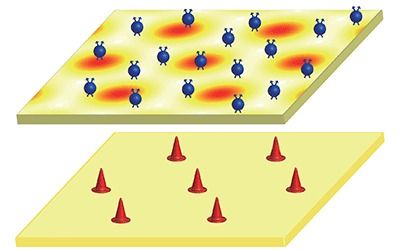Nice synopsis.
The lattice symmetry of a quantum Wigner crystal is deduced from its effect on quantized states in a nearby sheet of electrons.
Left to their own devices, electrons confined to a sheet can crystallize into an ordered array at low temperatures because of their mutual repulsion. Physicists have observed a classical version of this “Wigner crystal” in electrons floating on liquid helium and a quantum variety in electrons trapped at a semiconductor interface. But the lattice geometry of electrons in the latter has been tough to glean. A team led by Mansour Shayegan at Princeton University, New Jersey, obtained this information using a new technique, possibly providing a way to test the many-body theories that predict Wigner crystallization.
The experimental device consists of a stack of two closely spaced semiconductor quantum wells. Electrons in quantum wells are effectively trapped in 2D, and at high magnetic fields and low temperatures they fall into quantized orbits. These states are the basis of the fractional quantum Hall effect (FQHE), whose signature is sharp dips in the resistance at fractional values of the so-called filling factor (the ratio of electron density to field strength).
